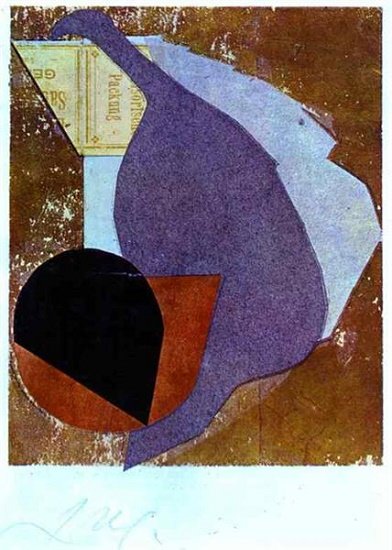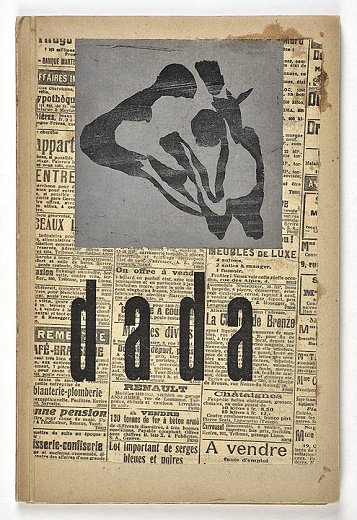Estimados lectores de #Hive, cada cierto tiempo vuelvo sobre la serie, iniciada hace más de un año, acerca de la modernidad poética (o estético-literaria, si se quiere ver con más amplitud), pues suponen un trabajo más detenido. Los últimos posts de dicha serie fueron los consagrados a Guillaume Apollinaire y al simultaneísmo (pueden ver 1, 2 y 3). Para ir terminando con lo que corresponde a los movimientos de vanguardia, habiendo ya tratado Futurismo y Expresionismo, entraremos a hablar del Dadaísmo, al que dedicaremos dos o tres posts, para cerrar luego con el Surrealismo. Para la síntesis que presento sigo el estudio hecho por el escritor Guillermo de Torre (ver en Referencias).
Nota: uso mayúscula inicial en los nombres de estos movimientos solo para destacar, en conocimiento de que deben escribirse en minúscula, según la norma de la RAE).
============
Dear #Hive readers, every now and then I come back to the series, started more than a year ago, about poetic modernity (or aesthetic-literary, if you want to see it more broadly) , as they involve a more detailed work. The last posts in that series were those devoted to Guillaume Apollinaire and simultaneism (see 1, 2 and 3). To finish with the avant-garde movements, having already dealt with Futurism and Expressionism, we will start talking about Dadaism, to which we will dedicate two or three posts, and then we will close with Surrealism. For the synthesis I present here I follow the study made by the writer Guillermo de Torre (see References).

De un modo u otro, los movimientos de vanguardia estarán marcados por el primer gran conflicto del siglo XX, la Primera Guerra Mundial, que se desencadena en 1914, y el Dadaísmo quizás fue uno de los más influidos por esa siniestra manifestación, considerada por intelectuales y artistas de la época como el fracaso de la civilización occidental, “descarriada en la matanza”.
Aunque se sabe que la actitud protestaría y la rebeldía contra lo convencional tiene sus raíces incluso antes de iniciarse la modernidad, es indudable que tendrán en los movimientos de vanguardia de comienzos del siglo XX niveles de concreción muy altos, siendo de Dadaísmo el que condensa mayormente ese estado de disconformidad y desengaño.
Después del Futurismo (1909-1916 aprox.), el Dadaísmo (1916-1920) es el movimiento de más manifiestos (siete en total) y actos desafiantes, caracteres muy propios de las vanguardias. De modo que las conductas audaces y atrevidas posteriores lo tienen como un obligado referente.

¿De dónde viene el nombre del movimiento? De la palabra Dadá, que, como dijo el propio impulsor del movimiento, el rumano Tristan Tzara: “No significa nada”. Su surgimiento no tiene una sola explicación, pero la más aceptada es la de que Tzara abrió un diccionario al azar y seleccionó la palabra más extraña. Así leemos en uno de sus manifiestos:
Dadá no significa nada. Si alguien lo considera inútil, si alguien no quiere perder su tiempo con una palabra que no significa nada [...] Por los periódicos sabemos que los negros kru llaman dadá al rabo de la vaca sagrada. El cubo y la madre en cierta comarca de Italia reciben el nombre de dadá. Un caballo de batalla en francés, la nodriza, la doble afirmación en ruso y en rumano: dadá.
============
In one way or another, the avant-garde movements will be marked by the first great conflict of the twentieth century, the First World War, which broke out in 1914, and Dadaism was perhaps one of the most influenced by that sinister manifestation, considered by intellectuals and artists of the time as the failure of Western civilization, "gone astray in the slaughter".
Although it is known that the protest attitude and the rebellion against the conventional has its roots even before the beginning of modernity, it is unquestionable that it will have in the avant-garde movements of the early twentieth century very high levels of concreteness, being of Dadaism the one that condenses mostly that state of nonconformity and disillusionment.
After Futurism (1909-1916 approx.), Dadaism (1916-1920) is the movement with the most manifestos (seven in total) and defiant acts, very characteristic of the avant-garde. So that later bold and daring behaviors have it as an obligatory reference.

Where does the name of the movement come from? From the word Dadá, which, as the movement's promoter himself, the Romanian Tristan Tzara, said: "It means nothing". There is no single explanation for its emergence, but the most widely accepted is that Tzara opened a dictionary at random and selected the strangest word. Thus we read in one of his manifestos:
Dada means nothing. If someone considers it useless, if someone does not want to waste his time with a word that means nothing [...] From the newspapers we know that the kru blacks call the tail of the sacred cow dadá. The cube and the mother in a certain region of Italy are called dada. A workhorse in French, the wet nurse, the double affirmation in Russian and Romanian: dadá.

Todo este inicio se corresponde con lo que será: “(…) no una empresa de construcción, sino una tentativa de demolición”, como lo afirma el español Guillermo de Torre. Idea que mucho antes anuncia el escritor André Gide: “Dadá es el diluvio después del cual todo recomienza”.
Frases de Tristan Tzara, como las siguientes, son muy reveladoras: “El hombre no es nada. Medida con la escala de la eternidad toda acción es vana”, “Estamos contra todos los sistemas, pero su ausencia es el mejor sistema”.
De modo que estamos ante una tentativa que si podía tener algún propósito este es la negación en sí misma, “hacer tabla rasa de todo lo existente”, en expresión de Torre.
En el próximo post precisaremos su origen histórico, fundadores, manifiestos y otros aspectos de interés.
============
All this beginning corresponds to what will be: "(...) not a construction enterprise, but an attempt at demolition", as stated by the Spaniard Guillermo de Torre. An idea announced much earlier by the writer André Gide: "Dada is the deluge after which everything begins again".
Tristan Tzara's phrases, such as the following, are very revealing: "Man is nothing. Measured with the scale of eternity all action is vain", "We are against all systems, but their absence is the best system".
So we are facing an attempt that, if it could have any purpose, this is the negation itself, "to make a clean slate of everything that exists", in Torre's expression.
In the next post we will specify its historical origin, founders, manifestos and other aspects of interest.
Referencias | References:
Pierre, José (1968). El Futurismo y el Dadaísmo. España: Ediciones Aguilar.
Torre, Guillermo de (1974). Historia de las literaturas de vanguardia (Vol. 1). España: Editorial Guadarrama.
Continúa...

Gracias por su lectura | Thank you for reading.



~~~ embed:1527085739812560902 twitter metadata:OTdfaGVyZXx8aHR0cHM6Ly90d2l0dGVyLmNvbS85N19oZXJlL3N0YXR1cy8xNTI3MDg1NzM5ODEyNTYwOTAyfA== ~~~
The rewards earned on this comment will go directly to the person sharing the post on Twitter as long as they are registered with @poshtoken. Sign up at https://hiveposh.com.